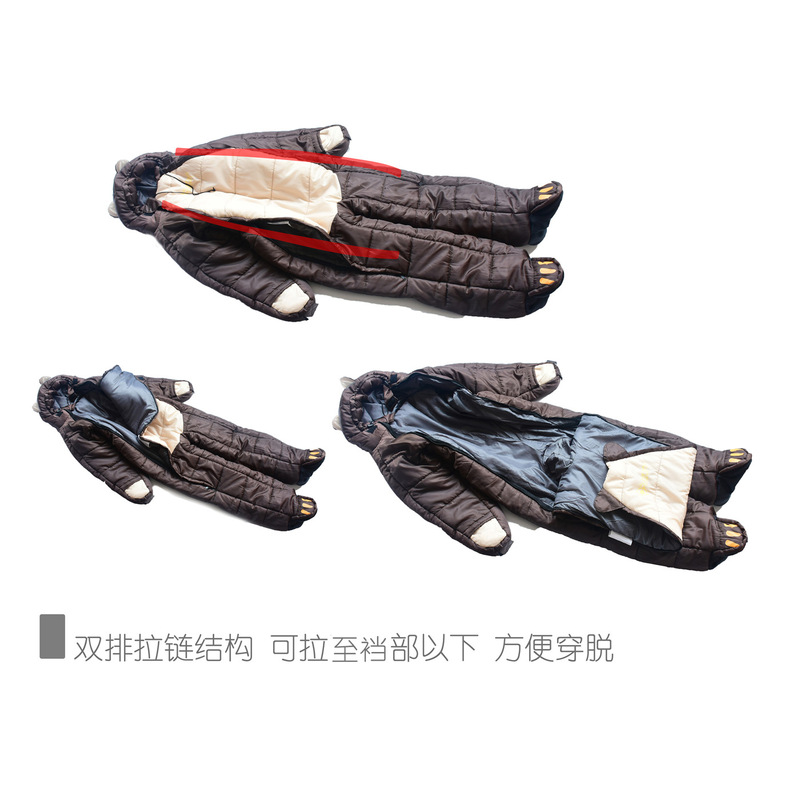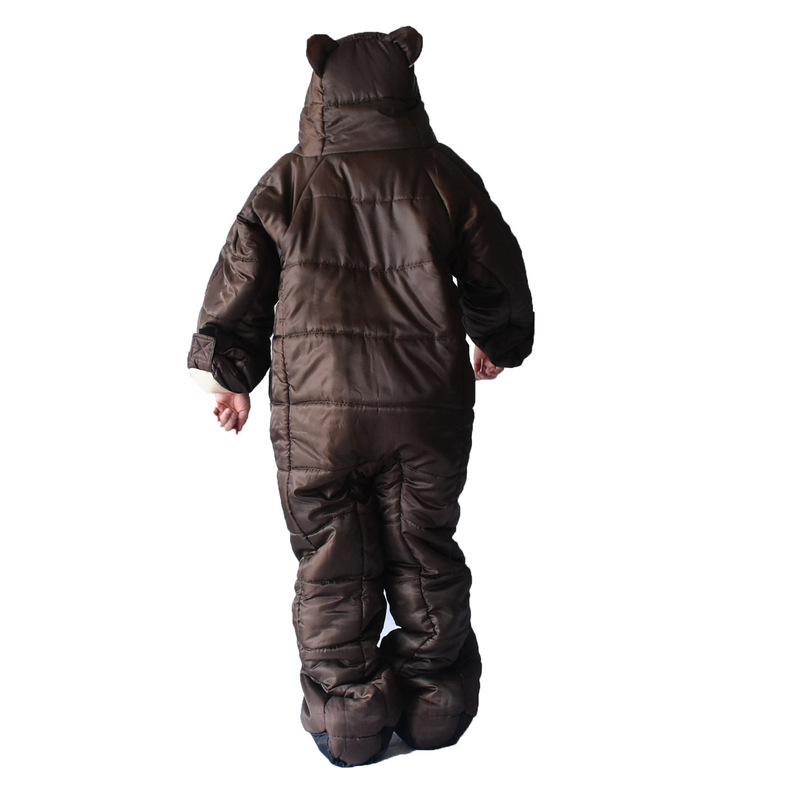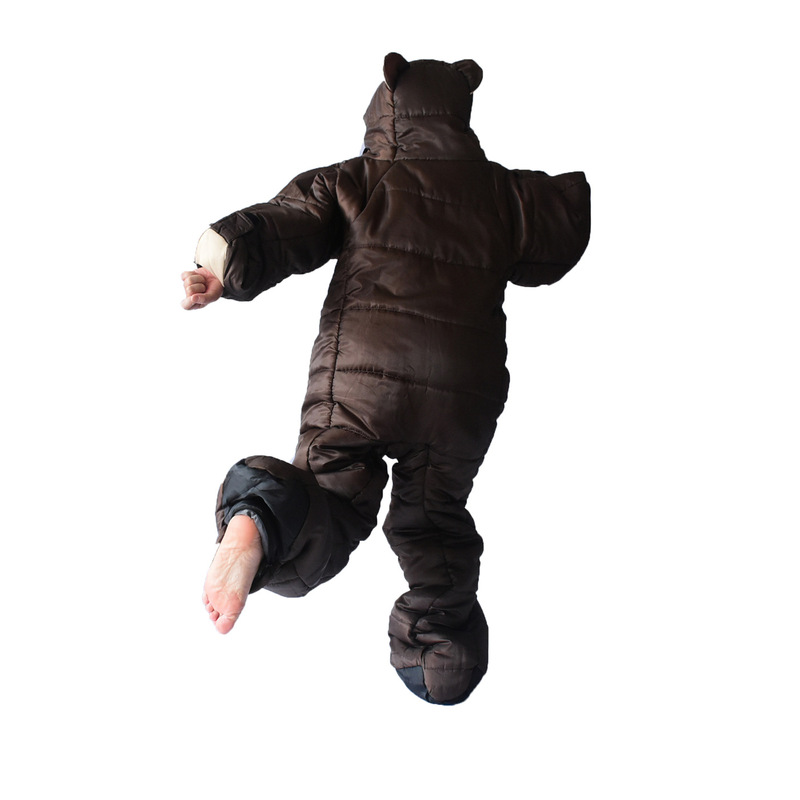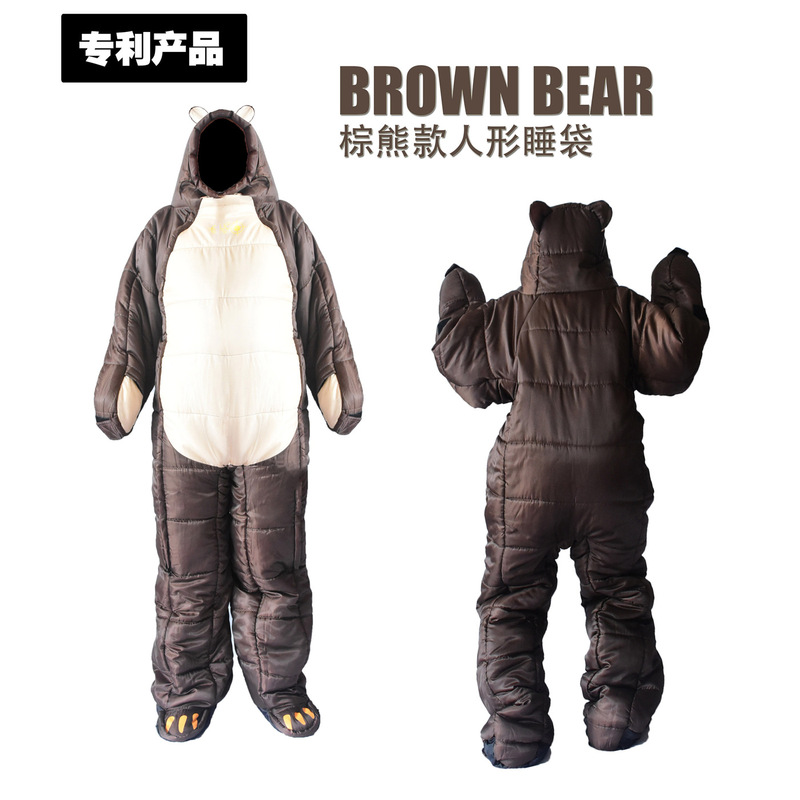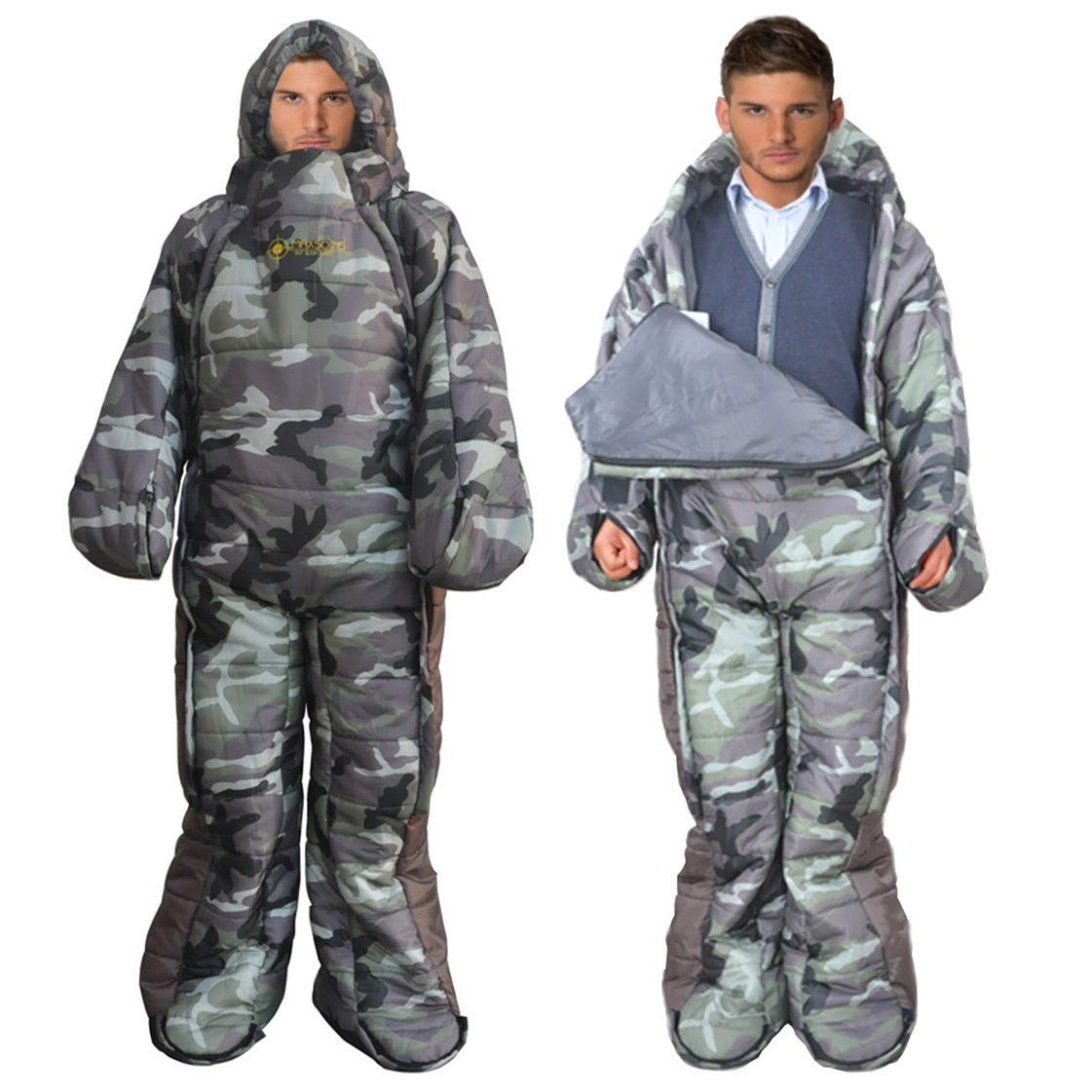Box regulations: M(43*37* 71cm); L(43*37* 78CM); XL(43*41* 79cm)
About the origin of sleeping bags
Early humans used animal fur to make warm clothing and sleeping mats. People, including the Eskimos living near the Arctic, still use it today. In the early 19th century, mountaineers and mountaineers began to test different sleeping bag systems. , early sleeping bags were filled with camel hair with excellent thermal insulation properties. Later, hollow rubber air cushions were invented and used for expeditions to the Earth's poles in the 1820s. In 1861, Francis Fox Tuckett tested the first Alpine sleeping bag prototype. In the mid-1860s, the envelope-type sleeping blanket design began to be perfected, and the part close to the ground had a hollow rubber coating as a thermal insulation layer on the ground.
Down was widely used in mattress fillings in the early 19th century because of its good thermal insulation properties. In the Victorian era of England, women even filled the inner layers of their skirts with down to keep out the cold. However, the processing and use technology of down did not change in the 19th century. It only began to develop in the middle period. The first recorded down sleeping bag was used by the British ALFRED MUMMERY expedition team in 1892. It was developed from the sleeping bag prototype of the Alpine Mountaineering Club and manufactured by the British Furniture Company. However, this was not the real meaning of production. Commercial sleeping bags. In 1890, the ajungilak company began to commercially produce sleeping bags. During this period, sleeping bags were made of stuffing. Until the 1820s, sleeping bags were special products, but due to the growing demand market, more companies began to design and production of sleeping bags. Based on the rise of exploration activities and mountaineering, the design and production of sleeping bags began to be continuously developed and improved in the 1830s. At this time, the mummy-style sleeping bag that could tightly wrap the body was born. British mountaineers also succeeded with this sleeping bag After the industrial revolution, due to the development of manufacturing and chemical industries, synthetic fibers began to be mass-produced. Due to their excellent thermal insulation properties, synthetic fibers began to be widely used in the production of sleeping bags.
brown bear sleeping bag
Material: Outer polyester, inner polyester, filled with hollow cotton
weight: About 1.75kg
suitable temperature:- 5℃ to about 5℃
Product Usage: Outdoor camping, hospital escort, etc.
Specification:
M( Approximately 190CM in length, recommended height is 150cm- 170CM)
L( About 200CM long, recommended height 160cm- 180CM)
XL( Approximately 210CM in length, recommended height is 170cm- 190CM)
special reminder:
1. The specifications indicated above are measured manually, and errors are inevitable. If you mind, please be careful when photographing.
2. Products with the above specifications are all in stock and will be available at 17 on the same day: If taken before 00:00, it will usually be sent out on the same day.
3. This product is a newly developed product by our company in 2019. The product patent number is: 201930221527.0 Sincerely COPY imitators respect themselves.
4. Subject to OEM processing, export orders are accepted. This product is in export packaging, not domestic retail packaging. The product does not support domestic retail, but samples can be taken for confirmation. When a certain quantity is reached, packaging can be made according to customer requirements.
5. The comfort temperature indicated is only based on the general experience of our staff. There is no authoritative quantitative data. Please be informed before taking the photo. Please consult customer service for details.
This product can be uploaded to Amazon, AliExpress, WISH and other platforms for sale, and picture packages are provided. After placing the order, please consult customer service to provide a white background picture package.





